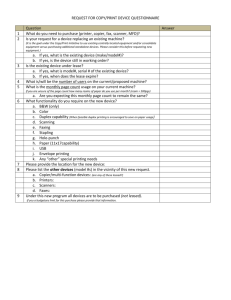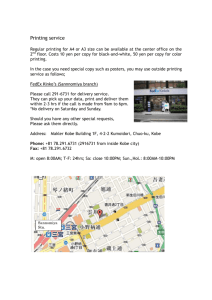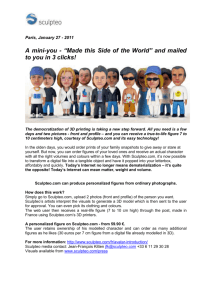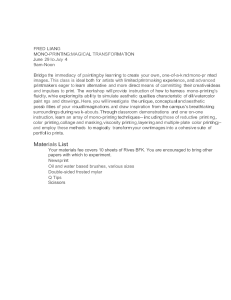Notes on the discussion of the presentations
advertisement
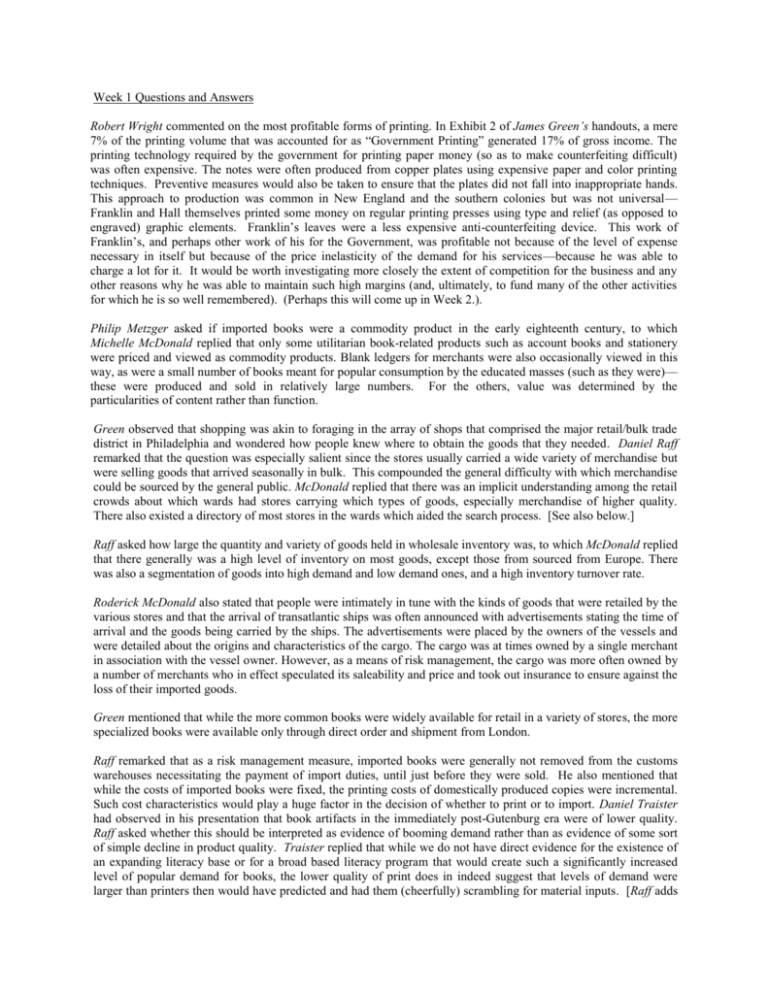
Week 1 Questions and Answers Robert Wright commented on the most profitable forms of printing. In Exhibit 2 of James Green’s handouts, a mere 7% of the printing volume that was accounted for as “Government Printing” generated 17% of gross income. The printing technology required by the government for printing paper money (so as to make counterfeiting difficult) was often expensive. The notes were often produced from copper plates using expensive paper and color printing techniques. Preventive measures would also be taken to ensure that the plates did not fall into inappropriate hands. This approach to production was common in New England and the southern colonies but was not universal— Franklin and Hall themselves printed some money on regular printing presses using type and relief (as opposed to engraved) graphic elements. Franklin’s leaves were a less expensive anti-counterfeiting device. This work of Franklin’s, and perhaps other work of his for the Government, was profitable not because of the level of expense necessary in itself but because of the price inelasticity of the demand for his services—because he was able to charge a lot for it. It would be worth investigating more closely the extent of competition for the business and any other reasons why he was able to maintain such high margins (and, ultimately, to fund many of the other activities for which he is so well remembered). (Perhaps this will come up in Week 2.). Philip Metzger asked if imported books were a commodity product in the early eighteenth century, to which Michelle McDonald replied that only some utilitarian book-related products such as account books and stationery were priced and viewed as commodity products. Blank ledgers for merchants were also occasionally viewed in this way, as were a small number of books meant for popular consumption by the educated masses (such as they were)— these were produced and sold in relatively large numbers. For the others, value was determined by the particularities of content rather than function. Green observed that shopping was akin to foraging in the array of shops that comprised the major retail/bulk trade district in Philadelphia and wondered how people knew where to obtain the goods that they needed. Daniel Raff remarked that the question was especially salient since the stores usually carried a wide variety of merchandise but were selling goods that arrived seasonally in bulk. This compounded the general difficulty with which merchandise could be sourced by the general public. McDonald replied that there was an implicit understanding among the retail crowds about which wards had stores carrying which types of goods, especially merchandise of higher quality. There also existed a directory of most stores in the wards which aided the search process. [See also below.] Raff asked how large the quantity and variety of goods held in wholesale inventory was, to which McDonald replied that there generally was a high level of inventory on most goods, except those from sourced from Europe. There was also a segmentation of goods into high demand and low demand ones, and a high inventory turnover rate. Roderick McDonald also stated that people were intimately in tune with the kinds of goods that were retailed by the various stores and that the arrival of transatlantic ships was often announced with advertisements stating the time of arrival and the goods being carried by the ships. The advertisements were placed by the owners of the vessels and were detailed about the origins and characteristics of the cargo. The cargo was at times owned by a single merchant in association with the vessel owner. However, as a means of risk management, the cargo was more often owned by a number of merchants who in effect speculated its saleability and price and took out insurance to ensure against the loss of their imported goods. Green mentioned that while the more common books were widely available for retail in a variety of stores, the more specialized books were available only through direct order and shipment from London. Raff remarked that as a risk management measure, imported books were generally not removed from the customs warehouses necessitating the payment of import duties, until just before they were sold. He also mentioned that while the costs of imported books were fixed, the printing costs of domestically produced copies were incremental. Such cost characteristics would play a huge factor in the decision of whether to print or to import. Daniel Traister had observed in his presentation that book artifacts in the immediately post-Gutenburg era were of lower quality. Raff asked whether this should be interpreted as evidence of booming demand rather than as evidence of some sort of simple decline in product quality. Traister replied that while we do not have direct evidence for the existence of an expanding literacy base or for a broad based literacy program that would create such a significantly increased level of popular demand for books, the lower quality of print does in indeed suggest that levels of demand were larger than printers then would have predicted and had them (cheerfully) scrambling for material inputs. [Raff adds reviewing these notes that there is a great deal of evidence in favor of this interpretation in the e.g. the Plantin history.]



